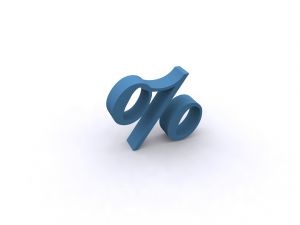This article is part of our
Valuation Methodology series:
Now that we’ve assessed all these numbers, we can determine if a venture is (or was) worth our time. If we’re working with the 1x multiple (or P/E of 1) we discussed in the last section and a $5000 income stream after expenses, which required 100 hours to set up, we’d basically see that we created $5000 worth of value with 100 hours of work, making $50 per hour. So if that $50 per hour is better than what we could have made otherwise, it was a good use of our work. Here’s an equation we can use to do these calculations:
Projected Income x Multiple = Worth
Worth / Hours to Develop = Hourly Pay
So, in this case, our calculation looks like this:
$5000 (income) x 1 (multiple) / 100 (hours invested) = $50 / hour.
The tricky thing, however, is that while you might only be able to sell the fruit of your labor for $5000, that doesn’t mean that’s all its worth to you. While an investor would be concerned whether he can sustain that level of income after buying the venture, you might have much more confidence in your ability to sustain it.
Here are a few of the basic factors that affect the value of a venture:
- Longevity – Will the content you produce still be accurate, and will the subject matter still be interesting for a substantial amount of time?
- Competition – Are you facing many competitors; are you likely to do so in the future?
- Effort – Is your venture keyed on your effort? If so, how much? Could you outsource the maintenance work?
And some rules of thumb I might use for valuing ventures:
| Multiple |
Description |
Example |
| 1-3 |
Labor intensive sites in contested or transient markets. |
Blog for a gaming console platform (a transient subject since these things eventually become outdated) |
| 2-4 |
Low labor sites in transient market |
Forum for a popular tv show |
| 3-5 |
High labor site in a stable market |
Stock recommendations |
| 6-8 |
Low labor site in a stable market |
Political wiki |
Finally, another way to look at the value of a passive stream of income is by considering how much would you have to put in the bank to earn that passive income at the same rate. To make the $5000 in our example at a 5% rate, you would have to put $100,000 in the bank.
Obviously the $100,000 of cash is more valuable than our passive income stream venture, largely because it also has a $100,000 asset associated with it (the cash). Because our passive income venture isn’t as valuable an asset as the $100,000 cash (which is no-risk), but can still be relied upon (in an ideal world) to deliver about $5000 per year in income, we can safely value our venture at about a 10x multiple—roughly half the value of the cash. This is a “best-case” P/E. Basically if you invented the perfect income stream that produced its income as regular as clockwork and would continue to for the foreseeable future you might use a P/E of 10.
Now let’s put all this information to work. A multiple of 5x is often satisfactory for getting a rough idea if something was worth your time. It is likely that you will be able to get five years of earnings out of the venture before the market substantially changes or other factors force you to invest more development costs. So if you assume a 5x multiple is appropriate, this allows you to basically see how much time you should be willing to invest to develop it. Let’s look at this equation again:
Projected Income x Multiple = Worth
Worth / Hours to Develop = Hourly Pay
If I have a stream that I project will yield $5000 after taxes, at a 5x multiple we value that stream at $25,000. If I want to make at least $500 hour from my venture, then I shouldn’t pursue the project unless I feel like I can develop it in roughly 50 hours of work. If I’m willing to accept $50 per hour, then I can spend 500 hours developing it. Remember, your income in question should be post tax, but should be compared to your “day job” income post tax as well.

Here\'s where it gets REALLY interesting.
Remember also that these multiples are for ongoing ventures. If your final goal is to sell your venture, you should value it at a low multiple more realistic from buyer’s perspective—perhaps 1-3x income. However, if you are planning to hold your venture indefinitely, a higher multiple such as 5-8x income may be appropriate.
With these equations you can solve for the various variables, such as how many hours you should be willing to invest in developing the stream or how much it would have to yield to be worth it. Of course there is one more thing to consider in evaluating whether a stream is “worth it.”
Categories: Main blog narrative · Theory
This article is part of our
Valuation Methodology series:
Price/Earnings Ratio
If you go to any finance site and look up a stock, among the many ratios and figures it will show you will be the “price/earnings” ratio or “P/E.” This is generally considered one of the most important ratios in evaluating the price of a stock. As you might expect, it is a ratio of the price of the company over the earnings of the company. (Note: Because we’re talking about a ratio, “per share” P/E and “per company” P/E are the same number.)

The terrifying world of web-price-multiples.
Example: If a company makes $2.00 per share in revenue and has a stock price of $15.00 per share, it will have a P/E ratio of 7.5. That means the company costs 7.5 times what it makes in a year.
Typically, publicly traded stocks are somewhere in the 10 to 20 P/E range, although there are plenty of exceptions.
Price Multiples for Privately Held Companies
When you move into the world of privately held companies, the multiples tend to diminish drastically. For example, if a fast food restaurant makes $100,000 per year, it may sell for a 3 to 10 P/E (versus the publicly traded company selling at a 10 to 20 P/E). This is a reflection of several things, including:
- Privately held companies are not held to the same stringent bookkeeping requirements.
- Privately held companies usually have shorter histories on which to base their valuations.
- Small enterprises are often much more dependent on their founders. While they may be making good money now, once the founder and his contacts and skills are gone, profits may drop drastically.
- Small companies are generally not worth as much as larger ones simply because “big money” doesn’t have any interest in them. Many people make money simply by aggregating small businesses and selling the aggregated company to private equity firms.
Price Multiples for Internet Businesses
As you might expect, in the internet world this multiple goes down yet again. In fact, if you go to Sitepoint.com, you will find that most small internet sites are selling for 10 to 12 times their MONTHLY earnings. That is they are trading at a P/E somewhere between 0.83 and 1 typically. So if I have a site that allegedly makes $5000 a year, I would expect to sell it for about that amount.
These low multiples represent all the same problems of privately held companies taken to the extreme. Fraud is rampant and the books are questionable to say the least. Moreover, many of these businesses are simply extensions of the founder and are basically worthless without them. Given the difficulties in assuming control of a web site, it’s no wonder people are not willing to pay as much as they will for a “real” business.
So if I can sell my site that makes $5000 per year for $5000, does that mean that it’s WORTH $5000 to me? Not necessarily.
Categories: Main blog narrative · Theory
This article is part of our
Valuation Methodology series:
Before you start any venture you should do a realistic income projection. If you have already started your enterprise, you may want to do a projection based on additional income. If you have already fully executed your idea, you may simply want to know if it was worth having done. Whatever your goal, you are going to need to calculate your venture’s income.
First, you need to do a realistic assessment of what you are likely to make. Using best-case projections is a surefire way to be disappointed. Obviously these projections are going to be highly subjective—in fact, they may seem completely fabricated. But it’s a very worthwhile investment to see just how much advertising is necessary or how many thing-a-ma-jigs you would have to sell to make a certain amount. After you’ve played with the numbers a bit, make a realistic estimate of what might be likely; this is your projected revenue.
(If instead of projecting you’re just ‘doing the books’ for a project already in progress, you should already have these revenue numbers. You can use them to project further into the future and have more accurate assessments than if you’d just ‘made them up’ before starting.)
Second, deduct any expenses. These include:
- Direct Costs of Goods Sold (i.e., if you’re selling widgets that cost you $5 to make or buy, take out $5 for every widget you’re projecting you’ll sell)
- Hosting Costs
- Domain Name Registration Costs
- Purchased Labor (either outsourced or employed)
- Shipping Costs
- Advertising Costs
Additionally (and most importantly), you need to deduct the cost of your own labor. This is typically forgotten, but if the goal is to create a passive income stream, any work you have to dedicate to maintaining the enterprise needs to be deducted from your profits. This can often be a daunting number. Even if you only require 1 hour per week to maintain your site, that’s 52 hours per year. Multiplied by your hourly rate this can quickly bite into your profits.

The art of projecting income, AKA "making things up"
You should not include in this deduction the time spent developing your website. This is a one-time expense and doesn’t affect the ongoing profitability of your venture. That doesn’t mean that up-front investments are irrelevant. Obviously, establishing a passive income stream of $5000 per year is a much better deal with 50 hours of labor versus 500, but right now we’re just worried about operating costs. We’ll see if the up-front costs are worth it later.
Finally you will need to remove income tax from the projected profits. While the tax situation can become complicated, probably the most realistic way is to project paying the same tax rate on your income from this passive income stream that you would on ordinary income. Thus if you are in the 35% tax bracket, reduce your income stream by 35%.
After completing these calculations, you can figure out a rough estimate of what your project will yield in yearly income. Once you’ve finished your valuation, you will probably want to play with these numbers to find your break-even point. That is how much advertising or how many products will you have to sell just to “be in the black.” Later on we’ll use these calculations to deduce if it’s worth the effort to develop this project.
Categories: Main blog narrative · Theory




